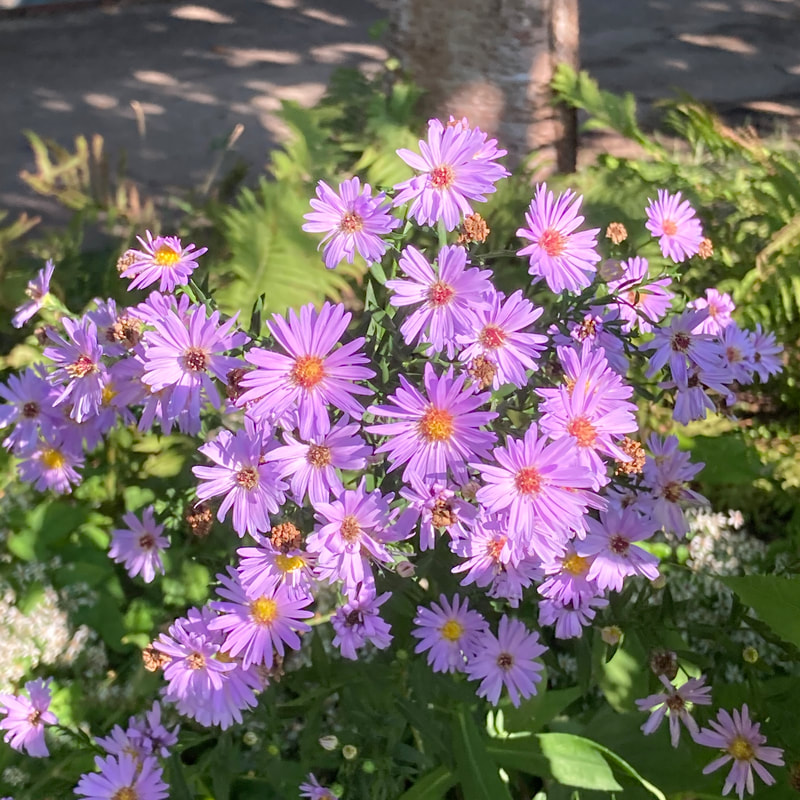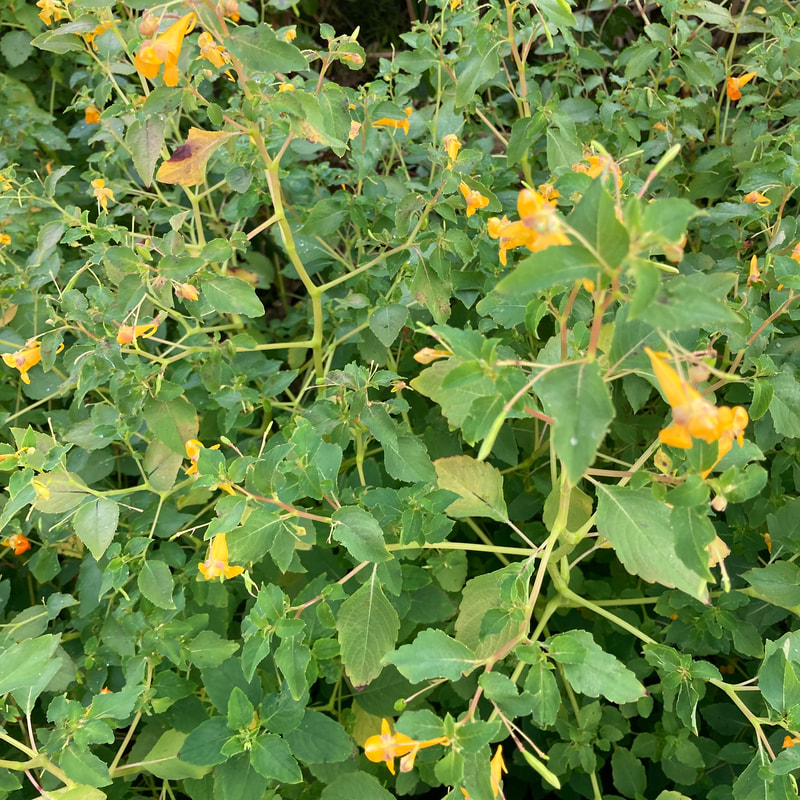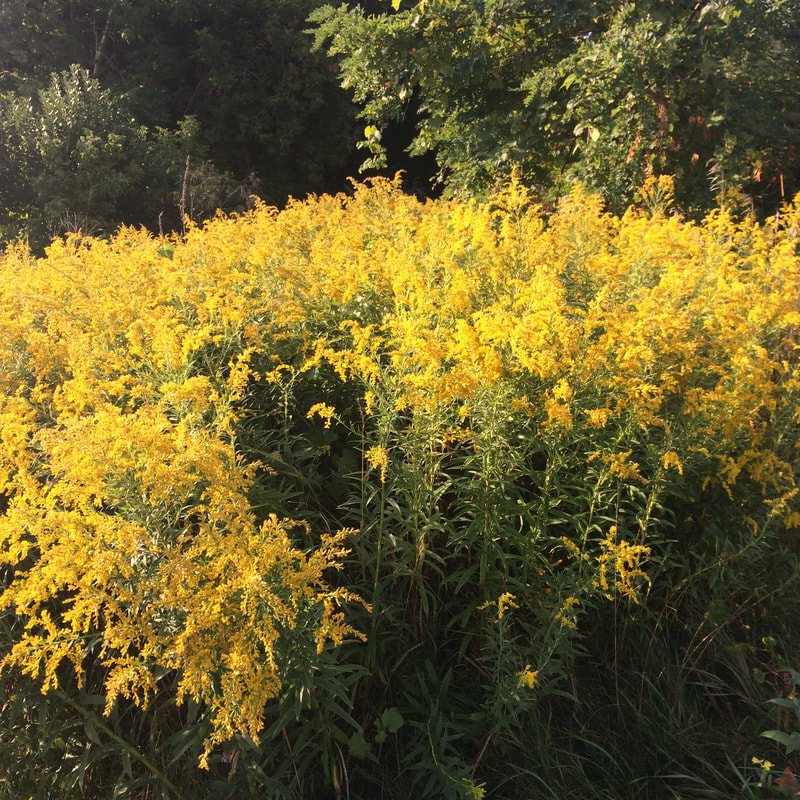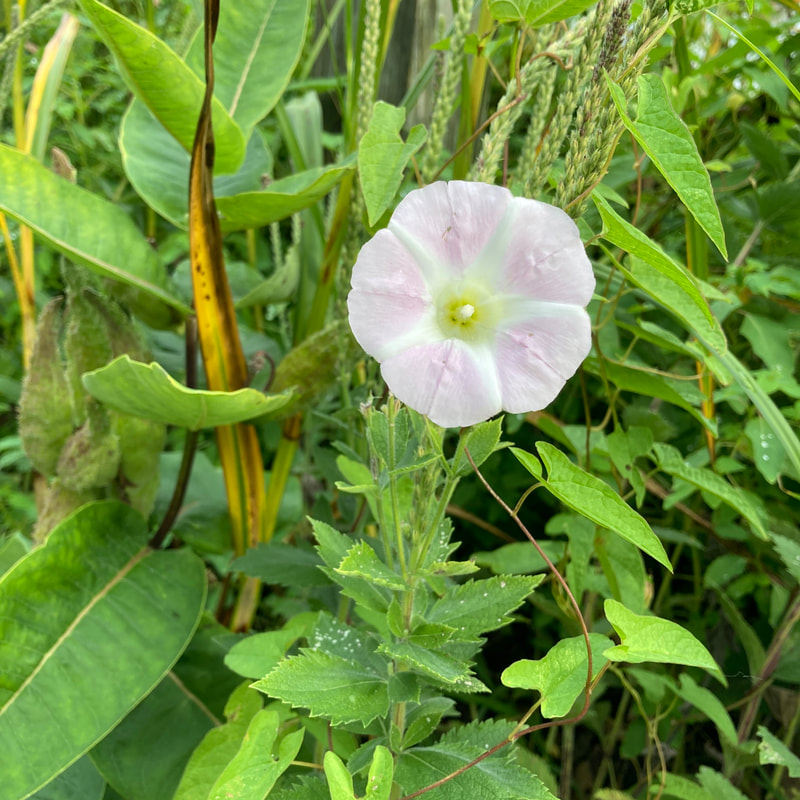|
Photos and article by Donna Iverson Wildflowers are usually associated with Spring…..trillium, snowdrops, hepatica, and columbine, to name a few. But fall wildflowers are also lovely and a welcome addition to any garden or yard. And now is the best time to plant the seeds for a fall showing. Here are four varieties that are easy to grow and native to our area: Wild aster You can choose from two varieties of wild aster...New England aster and New York aster. One clue to telling them apart is the leaves. The New England aster has hairy leaves while the NY aster has smooth leaves. Both can grow to 6 feet tall with snowy purple, lavender, or blue flowers. They are a nectar source for Monarch butterflies, native bees and late season pollinating insects. Plant the seeds in the fall for blooms in August, September and October. Jewelweed Not as snowy as aster, Jewelweed is covered in inconspicuous yellow or orange flowers and often found near poison ivy. Yes, poison ivy. Both plants like damp soil near creeks and ditches. But whereas poison ivy will give you a rash; Jewelweed is the antidote. Break off a handful of Jewelweed’s leaves, stems and flowers and crush it in the palms of your hands. Then rub the crushed plant material on the rash for relief from the itch. It also speeds healing. A note of caution, a few people are allergic to this plant so test it on a small area of skin before rubbing it on a rash. In late fall, Jewelweed’s ripe seed pods will explode in your hands when touched, earning this annual’s common name touch-me-not. Butterflies and hummingbirds love it too as do the neighborhood deer. Goldenrod While some people view goldenrod as a noxious weed that gives them allergies, I will argue that it is a beautiful wildflower and it’s the nearby ragweed that is causing the sniffles. So take a second serious look. It adds a golden beauty to the landscape and blooms well into the fall. Like most native wildflowers, it attracts pollinators and other beneficial insects. It is drought tolerant and survives just about anywhere. You won’t have to fertilize it and it provides a food source for birds, mammals, insects and the Monarch butterfly. And unlike Jewelweed, it is deer resistant. Rose mallow The last fall wildflower on this list is rose mallow. Often found near jewelweed, goldenrod and asters, rose mallow has small delicate rose-like flowers that also bloom late into fall. It is found near wetlands, or along creeks or river beds.
Also called swamp hibiscus, rose mallow attracts native butterflies and is best planted along a flower border or in a water garden. * Seeds for these fall wildflowers can be ordered from the Michigan Wildflower Farm in Portland. Website: michiganwildflowerfarm.com. Phone: 517.647.6010. If you would like to see these fall wildflowers in bloom, checkout Heritage Landing in Muskegon. These native fall wildflowers are featured in a restoration project under the direction of the Muskegon Lake Watershed Partnership Stewards.
0 Comments
Your comment will be posted after it is approved.
Leave a Reply. |
Archives
April 2024
Categories |




 RSS Feed
RSS Feed